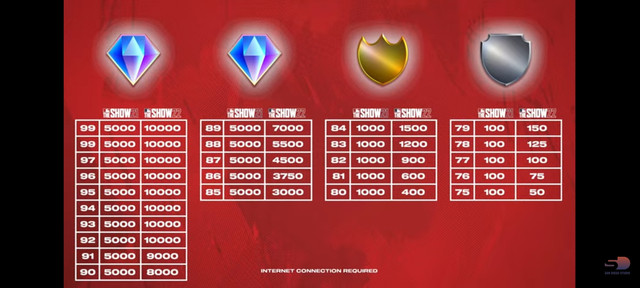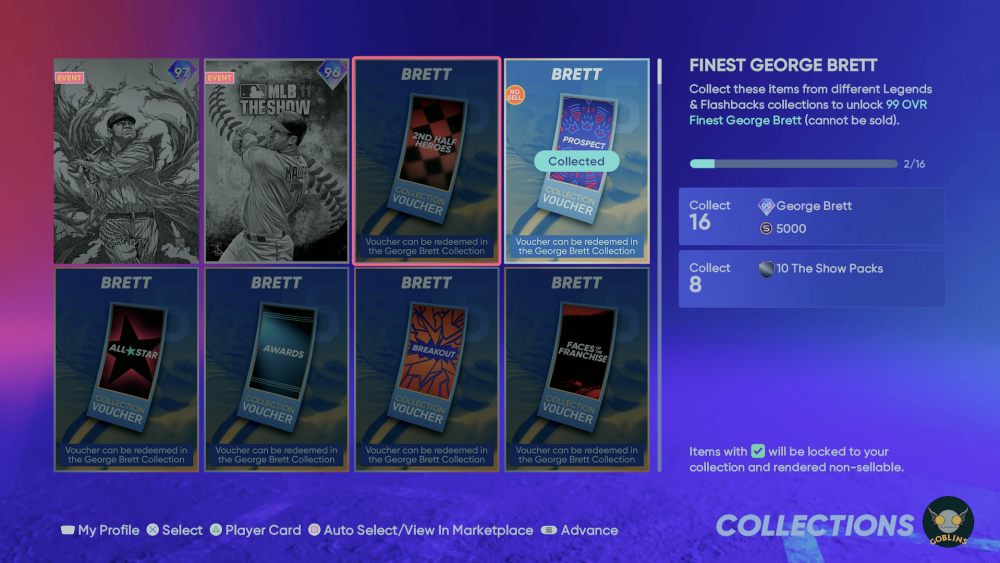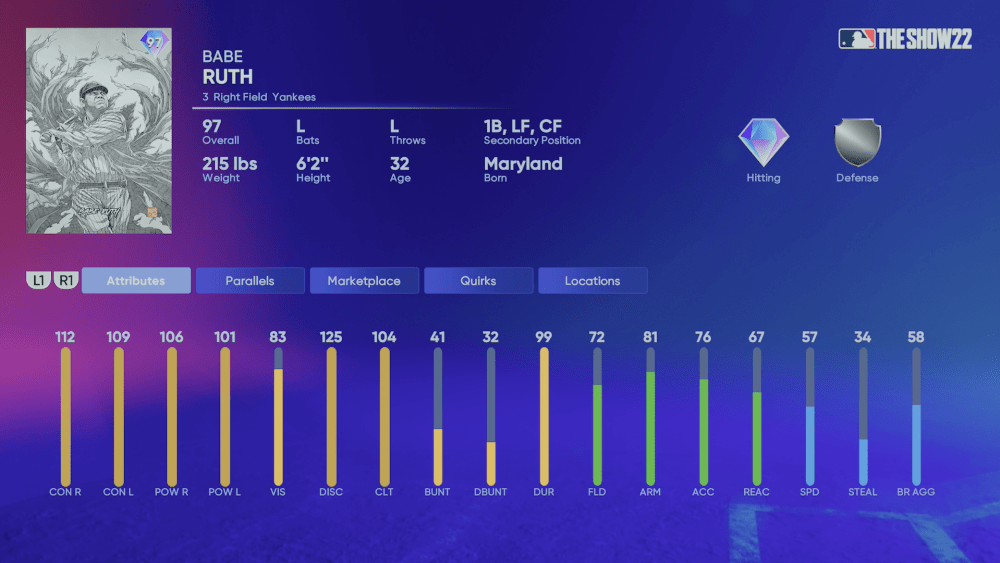Major League Baseball has officially begun its yearly hibernation, awaking only during the offseason for the sporadic trades and free agent signings to come. As the MLB season ends, so does the year. As the year ends, so does the content cycle for Diamond Dynasty.
We recently got what should be the final “fresh” Featured Program with Finest of the Franchise. Finest typically signals the end of significant content drops, and SDS has already announced that December 1 will bring the Forever Program to Diamond Dynasty. This program is always a massive combination of all previous Program Bosses and allows players to earn the previous Bosses along with other goodies. After that, the wait begins for MLB The Show 23.
Diamond Dynasty Year In Review: Content
Starting with content, I’ll be looking back at this year in Diamond Dynasty to talk about what went right and what went wrong. MLB The Show 22 was a historic release as it landed on Nintendo Switch after hitting Xbox last year. That led to a considerable amount of hype with the rapid expansion of the franchise. But did this expansion bring The Show and SDS to new heights? I’ll break down several facets of this year’s game to find out. In Part 1, we’ll cover everything related to content.
Pack It Up, Pack It In

The Show 22 didn’t really change the game much when it came to packs. Obviously, standard packs were back in various bundles and handed out for free all year. No matter what, SDS continues to be the most user-friendly developer when it comes to free packs. We got a handful of premium pack releases such as the Juicy Set that dropped new cards into the pipeline, but these all followed the same pattern as usual. Of course, the big addition on the pack front this year was Chase packs.
When Chase packs were first revealed during the Diamond Dynasty content pre-release stream, it stood out because it was new and unexpected. While it didn’t make me buy packs, it certainly provided a level of thrill chasing that didn’t exist prior. Not only could you pull a massive Live series diamond or the newest Headliner, now you could pull an ultra rare card that was only found in these Chase packs. Seeing a Chase pack pop out of a standard pack was a legitimate adrenaline rush as you suddenly found yourself staring at a lottery ticket and potential haul. But the idea of Chase packs ended up being much more exciting than the execution.

SDS ended up releasing only 5 Chase pack sets all year. The game launched on April 5 and with it came Set 1 featuring Awards Albert Pujols. The fifth and potentially final set was just released on November 4. This was a massive missed opportunity in my opinion, not only because of how few were released, but because a lot of these cards ended up with similar attributes to cards that released shortly thereafter. Thus, given how rare the Chase cards were compared to all other cards in the game, they ended up being really expensive cards that weren’t necessarily the best cards available. That Albert Pujols card was an exception as it was arguably one of the best cards over the first two months of the game cycle, but there just wasn’t as much luster as it appeared there would be when Chase packs were revealed.
Chase packs also ended up being a huge letdown as SDS introduced old Program Bosses into the card pool. While this led to former Boss cards being more readily available and cheaper, it also completely shellacked the suspense of getting a Chase pack. The Show community flooded social media with disappointed reactions as old boss cards were pulled from Chase packs for the first time. SDS never announced the addition of prior Bosses, they simply just started showing up in packs and boy was that an experience for everyone.
Overall, Chase packs ended up falling quite short of their potential and ended up feeling like an afterthought. SDS could really expand on Chase sets next year, and I hope they do as they have massive potential.
Market Troubles

In terms of the marketplace, SDS unexpectedly altered the quick sell price of cards depending on their overall rating. This completely changed investing in Diamond Dynasty that had grown into quite a lucrative hustle for many players. Investing in cards became second nature for those who knew the rhythm of releases and paid out millions of stubs for the most hardcore investors. The decision to alter the values makes sense from a business standpoint: make it harder to invest, make more money in stubs. I was never a huge investor but learned that rhythm and invested in early Event reward cards, bought low on all new Premium pack releases, and made Live series investments here and there.
Even without making it a priority, I was able to rack up a ton of stubs and access basically any card I wanted. The change in the market meta was enough to prevent me from investing, though I didn’t buy stubs as a result. And still, with quite a bit of luck with Live series pulls this year, I was still able to comfortably acquire the cards I truly wanted without too much effort.
The Collector

On the collection front, SDS followed their template of the last few years. The MLB Live series collection that pays out collection rewards for each team, division, league, and all of MLB remained the same. Randy Johnson, one of the big new Legend reveals, became the first SP in Diamond Dynasty history to be the MLB collection reward. This was for good reason as Johnson terrorized hitters all year and was still causing instant quits online. However, I found the overall Live series collection to be extremely underwhelming this year. Johnson was a huge new name and absolutely dominant, while Frank Thomas and Roberto Clemente left me feeling uninspired.
Obviously, new players jump into Diamond Dynasty each year so there’s many levels of experience. But as someone who started playing Diamond Dynasty in 2019, I’ve seen Frank Thomas be an XP reward path card that could be acquired for free, and Roberto Clemente was just featured last year in the incredible Field of Dreams Program. So while the actual cards featured of those respective cards differed from the free versions, the fact that within the last couple years we’ve gotten them for free only to see them as expensive collection rewards just felt kind of flat to me. There’s no doubt Thomas and Clemente were top-tier cards at launch, I just personally wasn’t enthralled by the choice.
SDS also brought back the big Legends and Flashback collections. Released periodically throughout the year, these cards typically end up in the conversation for best card in the game. George Brett, Andrew McCutchen, Jimmy Rollins and Mickey Mantle were the featured collection cards this year. Culminating with Mantle, who easily usurped Legends of the Franchise Hank Aaron from this year as my pick for best card in Diamond Dynasty history, these collections required a ton of cards and stubs to acquire them.
I felt each card was a solid choice, and the pacing between their respective releases felt smooth. SDS continued injecting free packs into the market that made these easier to complete over time. For me, these Legends and Flashbacks rewards were better than last year’s offerings and were certainly worth the grind and stubs. We also got some additional collections for Cover Athlete Joe Mauer, Takashi Babe Ruth, All-Star Game Jackie Robinson, and Takashi Okazaki Shohei Ohtani. Each of those collection rewards are already iconic cards in Diamond Dynasty lore, and their legends will only grow over time.

Card Art And Card Series
It would be sacrilege to talk about content in MLB The Show and not mention the art team. Diamond Dynasty continues to be the home for the best card art in sports card collecting modes. This has been the case for a couple years now, but it feels like the art team continues to outdo themselves each year.
The Award series continues to be an absolutely majestic design style that came with added flair this year. Each respective award featured its own unique colored tint. For example, Silver Slugger cards featured a predictably silver tint while MVP featured a cyan tint. This was such a simple design change to differentiate the different awards yet it added variety and freshness. The 2022 Finest series is solid but still pales in comparison to 2021’s perfect design. Retro Finest, on the other hand, was both a new series and new art that dropped jaws when it was first featured on the George Brett collection reward. The unique card design definitely stole the show in terms of the SDS art team’s contributions.

The obvious standout art wise this year was the Takashi Okazaki series. Okazaki was first and prominently featured as the designer of the hardcover MVP Edition of the game. At launch, we got an entire set of Okazaki-designed Legends that were pre-order bonuses. The card series proved wildly popular for the incredible manga-style art, and the series saw new cards regularly released all year.
As a card series, these cards were of the rare ilk that featured “made up” attributes as they didn’t correlate with any particular season or seasons of a player. SDS regularly features cards based on actual seasons or eras of a player, and the Okazaki series was a fun departure. I think SDS could release more “fantasy” cards that aren’t tied directly to real seasons and add some more thrill to the cards we use each year. Having incredible art paired with it is a huge bonus.

Going back to Retro Finest, it was a very cool addition this year by SDS that allowed us the chance to relive a Finest-style season for Legends and current players alike. But while the art was snazzy and the design concept was cool, SDS went deep in the bag and started releasing Retro Finest left and right. It felt very reminiscent to The Show 19 when they introduced Signature series cards and then spammed us to death with them all year. Considering Retro Finest were basically the best cards featured in the game, this onslaught of the series made the luster wear off quick and it became old hat. It didn’t make the cards less good or less attractive, it just made their releases less exciting. Retro Finest should definitely be a set that sticks around every year, perhaps just not featured as prominently. I’d also love to see Okazaki cards every year because seeing each new player in that design was a genuine joy.
Finally, I have to touch on the Milestone variations. Notably, Albert Pujols and Aaron Judge reached epic milestones this year and their card art in-game was phenomenal. Pujols featured a yellowish tint for his 700th home run, complete with 700 written in celebratory sparks. Judge was highlighted by his 62 home runs Milestone that featured a dark, grainy background with a golden 62 spotlighting his achievement. These two cards are the epitome of amazing card art and the kind of designs I wish existed as actual baseball cards because I would absolutely shell out to add these to my collection.

The only disappointing thing art wise this year for me was the Parallel design. I found it too minimalist and sometimes difficult to read the actual numbers on the card. But this is a minor gripe and didn’t take away from the Parallel system or overall card art whatsoever.
Coming up in Part 2, we’ll dig deeper into the heart of content and talk about programs: Featured Programs, Other Programs, Monthly Awards, and so on. Until then, what was your favorite card art this year? Did you invest any more or less with the marketplace change? Did you have good pack luck that made the Live series collection easier to complete?









Published: Nov 29, 2022 12:00 pm